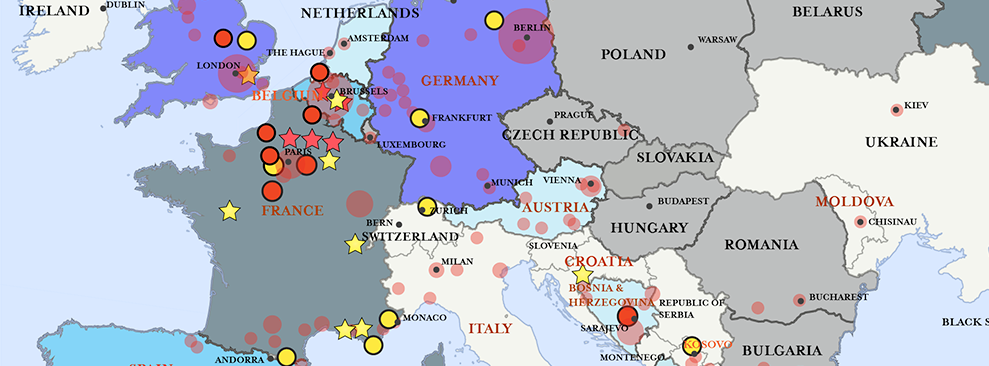Protests were to support Kurdistan, as Turkey under Erdogan has been killing Kurds.
Chaos Outside of Turkish President Erdogan’s Washington Speech
A planned speech by the controversial Turkish leader Recep Tayyip Erdogan descended into violence and chaos Thursday, with one journalist physically removed from the event site by Turkish security personnel, another kicked by a guard, and a third — a woman — thrown to the sidewalk in front of a Washington think tank where he was to speak.
A small group of protesters gathered across the street from the Brookings Institute near Dupont Circle in Washington, with one holding a large sign reading “Erdogan: War Criminal On The Loose,” while another used a megaphone to chant that he was a “baby-killer.”
When the protesters tried to cross the street, Washington police officers blocked traffic and physically separated them from Turkish personnel. A Secret Service agent standing nearby told a colleague that “the situation is a bit out of control.”
Later, a shoving match between what appeared to be a Brookings Institute worker and Turkish security broke out. “I am in charge of this building,” the apparent Brookings employee shouted as the two tangled. A Foreign Policy reporter and others holding cameras outside the event were also scolded by Turkish security. One cameraman was chased across the street by Turkish guards.
Local Washington D.C. police officers were forced time and again to get between Erdogan’s security forces and journalists and protesters. At one point, an officer placed himself between one of Erdogan’s security guards and a cameraman he was moving to confront, while another angrily confronted several Turkish security guards in the middle of the street, telling them, “you’re part of the problem, you guys need to control yourselves and let these people protest.” Another Turkish security official pulled his colleague away after he began arguing with the officer. Other members of Ergodan’s team stood in front of the Brookings building, motioning for the protesters to come closer, and making obscene gestures.
There were also confrontations between Turkish security and D.C. police. The Turkish officials wanted police to remove protesters, and the cops refused.
In a statement late Thursday, Brooking’s spokesperson Gail Chalef said that the think tank did its “best to ensure that journalists and other guests who had registered in advance for the event were able to enter.” She added that she believes all journalists who registered were able to attend.
At one point, just before Erdogan arrived, the protest briefly turned violent.
As he arrived, law enforcement arranged a wall of large vehicles in front of Brookings, presumably to block anti-Erdogan protesters across the street.
***





